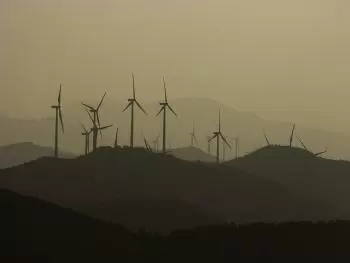
Wind energy is a renewable energy source that generates electrical energy from the force of the wind. It is the largest source of renewable power in the United States.
It is harnessed by giant wind turbines whose blades move with the wind. The wind, in turn, is a consequence of the Sun on the air. The temperature difference is what causes it to move. The generators are placed in strategic locations.
There are many suitable places for its location due to the strength and persistence of the winds. However, installing them in areas where they would be most efficient in generating electricity. There are many advantages of wind power. But it can be counterproductive for its development.
Like solar energy, wind power is a clean energy production source. It does not emit greenhouse gases in contrast with fossil fuels such as natural gas.
Another article analyzes the pros and cons of producing electrical energy through windmills. First, however, we analyze the cons of wind energy.
The generation capacity depends on the wind.
One of the main drawbacks of wind energy is that there is not always wind, so the support of another type of energy is needed for those moments (both polluting and clean).
The peaks in electricity demand often do not coincide with the times of the highest wind. Therefore, electricity production must be supplemented with other sources of energy.
Difficulty with electrical planning
Being energy that depends on the wind, electricity production cannot be planned.
Statistically, the days and times of tremendous demand for energy from the electricity network are known by the general population and the industry. These data are used to regulate the power of conventional power plants (gas plants, nuclear plants, etc.).
Thanks to meteorological models, this limitation of wind energy has been significantly reduced, especially when choosing the ideal locations to install a wind farm. However, it is impossible to increase the wind intensity according to need.
It cannot be stored
One way to compensate for the planning problem would be to store the energy generated at times of incredible wind intensity. However, we face one of the main drawbacks of most energy sources: storing large amounts of electrical energy is not feasible.
Limitations in a narrow range of wind speeds
Wind turbines only work correctly in gusts of wind between 10 and 40 km / h. The energy is not profitable at low speeds; at high rates, it represents a physical risk for the installation. When the wind is too strong, the blades are turned so that the wind crosses them, exerting the same pressure on both sides, and they do not move.
Transport of electricity to points of consumption
Since wind farms are located far from consumption points, an energy transport infrastructure is required, leading to energy loss and the need to install transmission lines. In the case of rural areas, these costs could be significantly high.
Although the cost-effective is not high due to the low operating costs, the initial investment, including the transmission lines and the connection to de grid, is significant.
Need to oversize wind farms
The energy density of the wind is low, which requires the number of wind turbines to be high to be useful. That is, while it is cheap and easy to obtain power, it takes a large sum of wind turbines simultaneously to make it profitable.
Environmental impact
The construction of wind farms has an environmental and aesthetic impact on the landscape, which sometimes causes discomfort to the local population. Often it is necessary to open roads and access to move the different parts of the wind turbines.
On the other hand, when it is in operation, the blades or blades of the wind turbines cause damage and danger to the fauna of the birds in the area, which, if they collide with them, usually die with them because of the impact.
Acoustic impact
Wind turbines operating do make noise. However, this disadvantage has been minimized thanks to the engineering advances applied to the new turbines.


